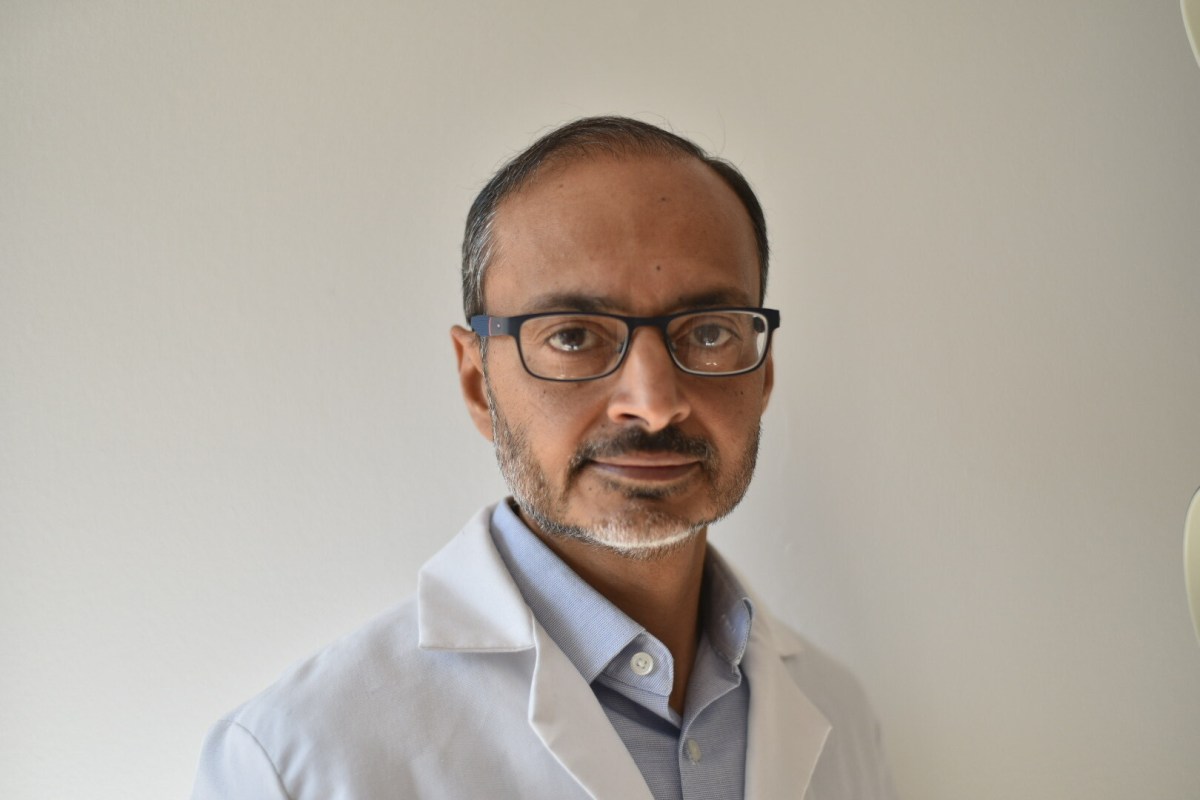Nearly a year into the COVID-19 pandemic, children with special needs have drastically regressed, experiencing both academic and behavioral challenges, according to Dr. Prashil Govind, a medical director of the Developmental and Behavioral Pediatric Department at Flushing Hospital.
It is one of the largest developmental and behavioral pediatric centers, located at 4500 Parsons Blvd., that primarily serves children (from toddlers to age 18) with disabilities such as learning issues, ADHD, autism, speech and language impairment, behavioral challenges, and many other concerns.
When the center pivoted from in-person sessions to virtual tele-health visits with families during the height of the pandemic, Govind observed that his patients — some with developmental disabilities such as cognitive and social emotional development — had regressive behaviors, such as becoming easily upset and acting out against adults.
“Usually when we have these behaviors, it’s the tip of the iceberg and their way of communicating some of the challenges they’re having,” Govind said. “Some of the other issues around special needs kids are those with ADHD or learning disabilities, who had to be in front of a screen for extended periods of time, which isn’t engaging as live teaching.”
While children were adapting to remote-learning during the pandemic, their families were dealing with challenges — such as not knowing how to connect with a doctor through tele-health, according to Govind. Additionally, families didn’t have enough devices for children in their households and had Wi-Fi connectivity problems.
“In Queens, we have a large immigrant population and English is not necessarily their primary language, and they [the parents] had challenges of trying to get help because of the language barrier,” Govind said.
Describing it as a “perfect storm” of challenges where families found themselves stretched with numerous barriers amid a pandemic, Govind had to provide technical support and sometimes spoke with parents over the phone. For Govind, it was mutually beneficial connecting with families, since they were all going through the same stressors of feeling worried and concerned.
“For them it felt reassuring to get some guidance and feedback and to just talk about the challenges they were having,” Govind said. “While I didn’t always feel like I was able to give them the help they needed, I felt like at least we were able to connect and they felt a sense of comfort.”
There have been some positive outcomes from conducting tele-health visits, which Govind described as a house visit.
“I remember one particular child who was excited and grabbed the iPad to show me his Lego creation, and it was an opportunity for me to see the child in a natural setting which is different from a medical setting that is very sterilized,” Govind said. “It was nice to see them in a more relaxed atmosphere in the comfort of their home.”
However, Govind was unable to interact with other children that were not able to stay in front of the screen.
When COVID-19 cases began to decline, the center had reopened in May with social-distancing guidelines in place to ensure the safety and health of its staff and patients. Govind was able to interact and play with the children, conduct full assessments and address developmental issues. However, some families didn’t feel comfortable with in-person visits until the summertime, while others had to juggle their other kids’ at-home learning schedules and taking public transportation.
“We tried to work with each family individually based on where their comfort level was and how we can best meet their needs,” Govind said.
While the center is currently inundated with requests for appointments and the pediatricians cannot see their patients in a timely manner due to the growing waiting list, Govind is recommending a list of tangible actions families can take to help their children.
He is encouraging parents to create a visual calendar of scheduled classes for the week, having kids take a break during the day, setting up a designated space in the household specifically for schoolwork, setting up a rewards system for completing a task, and most importantly, maintaining a nightly sleep routine.
According to Govind, during remote learning, many families expressed challenges connecting with their children’s school, and didn’t know how to negotiate services through the system. For example, if a child qualifies for special education and obtains an Individualized Education Program Plan (IEP), parents don’t understand what’s in the plan and the services that their children are entitled to, Govind said.
During the pandemic, the DOE created the Special Education Program Adaptations Document (PAD) along with the student’s schedule, to ensure that special education teachers and families share information with another about how the student can best benefit from blended or fully remote learning.
The PAD is a living document, based on a student’s most recent finalized IEP, and can be revisited at any point, based on how the child is responding to blended or remote learning, and at the parent’s request.
“Again, many parents had no idea about that — it may be that it was in their spam folder and a lot of them had technical challenges, and also the language barrier, not understanding what is told them about these services,” Govind said.
While they are medical providers, Govind said they give families access to community resources that can benefit their children.
“A lot of times we find ourselves not just making diagnoses and recommendations, but also helping with case management educating parents about the systems and hoping to get them the support that they need for their child that may have a developmental disability,” Govind said.
Govind says he is concerned about certain populations, such as low-income families in Queens, that have been more disproportionately affected by the pandemic.
“It’s important for us to recognize disadvantaged families that need support. While we look at other resources and nonprofit organizations that can assist, I still feel like we’re not quite getting the help directly to these families,” Govind said.



































